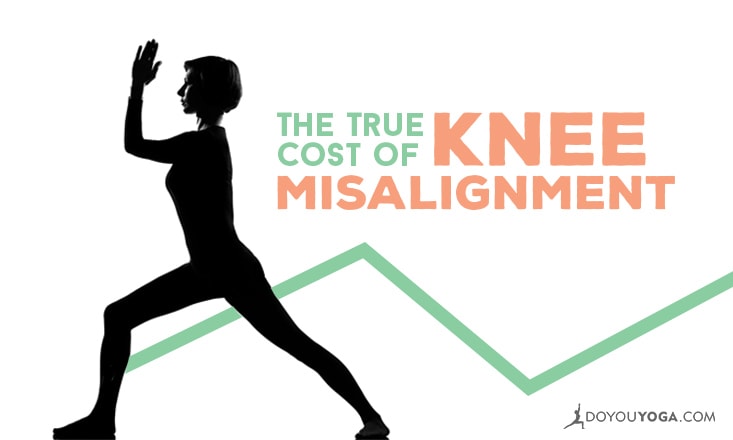Hands up if you have ever been in a yoga class knowing it's all about your body, but still feeling like taking a sneak peek on how the neighbor is doing his/her poses.
Before we notice, the ego takes over and we want to bend as deep or hold the pose in a similar way. But our bodies are not the same, so how could our poses be?
Yoga is a safe practice when we take care of aligning the poses to meet our body. We do not need to attempt to strike a pose, but let the pose be there for us. So what does this mean in practice? It means letting go of the one-pose-fits-all mentality and making sure we are not harming our bodies when we do yoga.
The Importance of the Knees
When we start building our base in yoga poses, we start with the legs and feet. The knees are involved in just about every yoga pose, and as such form an important part of our alignment. The knee is a hinge joint, meaning it's designed to move only one way.
Any twisting or stretching movement can damage the knee, especially when done repetitively for a longer time. Therefore it's essential to make sure your base is strong, and you take care of the knees with proper alignment.
Taking Care of the Knee in Two Key Poses
Warrior II
In Warrior II, the hips are open to the side, and the front foot’s toes are pointing towards the front of the mat. But what happens when your hips are not that open? Your knee starts to point more inwards, and this twisting action is not what you want for the knee.
You can do a check before you start Warrior II, and see where your front knee is pointing. Try first to externally rotate the front leg by turning the front knee more towards the side of the little toe. Then turn the front toes in so that your toes and knee are pointing in the same direction.
Triangle pose
In Triangle pose, the front knee should be pointing towards the center of the foot. If you notice that it's pointing inwards, the knee is being twisted and you could be damaging it in the long run.
You can correct this by focusing on an external rotation of the front leg. Keep a micro bend on the knee, and activate the quadriceps of the front leg to support the knee. If needed, bring the toes inwards so that your knee and toes are pointing in the same direction.
General Tips to Prevent Knee Misalignment
- Open up your hips with seated poses, like the Bound Angle pose. When the hips are open, the knees are less likely to compensate.
- There should be no twisting of the knee. You always want the knee and the foot to point to the same direction.
- When in standing poses, think about turning your knee towards the side of your little toe.
- There should never be any pain or stretching feeling in the knee. Especially in Yin yoga poses when we stay long in one pose, make sure the knees are doing ok. If not, always modify the pose.
- Engage the quadriceps in standing poses for support.
- If you have tight hips, you may tend to compensate a pose with the knees. Observe if you feel a stretch in the hips first, or in the knees. Any stretch in the knees is a sign to back out.
Yoga poses are essentially showing us where we are with our bodies and with our practice. Don't get attached to a form of a pose, and try to let go of how it should look like.
Instead, focus on getting to know your body as it is today, and modifying the poses according to that.


